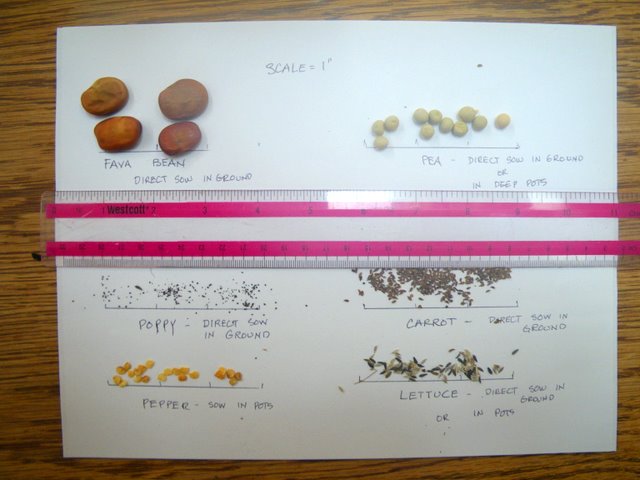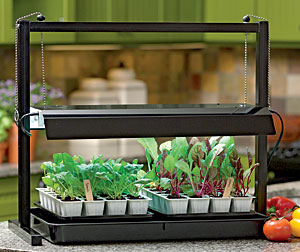by Avis Licht

Seed sizes
It’s January, and still feels like the middle of winter. Of course, it is the middle of winter in many places. But in Northern California, where I live, Spring is right around the corner, and it’s time to start not only thinking about what to plant, but to start sowing seeds now. I start most seeds indoors at this time of year. Plants like Broccoli, Cauliflower, Cabbage, Kale, Chard and others like cool weather, but not the damp cold to germinate. So January is a good time to get them started indoors and when they’re ready to transplant into the garden beds in Feb, they’ll be large enough to deal with the weather that early Spring brings.
If you’re thinking about your Spring garden and what to sow, you’re probably wondering if last year’s leftover seeds are good to sow this year. Don’t waste money buying new seed if what you have is good. To be sure, you don’t want to waste time by sowing bad seed. Here is a simple method to see if your seed is still viable.

Chard, one of the easiest and best vegetables to grow from seed in the early Spring.
1. Moisten a paper towel and place 10 to 20 seeds of one variety on it. Roll up the towel and place it in a plastic bag labeled with the seed variety. You can keep it on the kitchen counter at room temperature while you are testing. Check the seeds after 2 or 3 days, then every day for a week or two if needed; different varieties have different timing for germination. Be sure to make sure the towel stays moist. Count the number of germinated seeds and divide them by the number of seeds tested. This will give you the germination percentage. If 8 seeds out of 10 have germinated – you have 80% germination. Less than 80% germination means your seeds still have some viability but that you will need to sow them more thickly in order to get a good crop. Seeds with less than 50% germination may not be worth the trouble and you can go seed shopping!
If you do need to buy seeds try Seeds of Change. They are a great organization and provide organic, non – GMO seed. I definitely recommend buying their seed. You can do that by clicking here: Seeds of Change
2. Store unused seeds in a cool, dry place to ensure their maximum germination rates. I use empty herb and seasoning bottles to store my seed. I try to collect as much of my own seeds as possible. The glass bottles are labeled and I can also see the seed inside to remind me what I have.
Here are some good Seed Catalogs – Resources.
Here’s a great chart that Roger Doiron from Kitchen Gardeners International posted, which came from Colorado State University. It covers many common vegetables for your home garden. Of course, viability also depends on the conditions that the seed has been stored in. Too wet, too cold, too hot, too dry – all these can affect your seed germination, BUT, generally you can follow the chart.

Tomorrow I’ll talk about starting plants with grow lights.


 Follow
Follow
